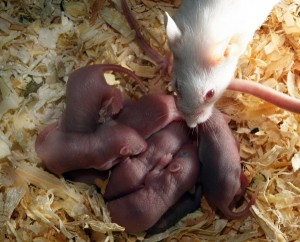It’s that time of year again when our content starts to become more fun. To continue the tradition of the last two years, I am going to take a look at which videos attracted the most attention on YouTube over the last year in the UK. Scroll to the end for the global list.
Sneaking in at number 10 this year is Learn the Alphabet with Peppa Pig! a video which teaches the alphabet the help of a family of pigs. Interestingly the video has a very high percentage of dislikes – around 10,500 likes to 9,000 dislikes. If you have forgotten the alphabet and want a quick refresher, I recommend you check out the UK’s 10th most visited video of 2013.
In at number 9 is a music video by the band Hadouken! The song is accompanied by a video of people doing all sorts of amazing, thrilling stunts and is well worth a watch. It proves to you what us humans are capable of.
The eighth most watched video on YouTube for the UK this year is Francine Lewis’ Britian’s Got Talent Interview. Francine is an impressionist who shocked and humoured the audience, naturally getting 4 yeses from the judges. If you want to follow her story (and have a laugh) check out the video, Francine Lewis with her many impressions.
Having been watched over 10 million times across the world Tom Daley: Something I want to say… comes in at number 7 on this years list. The Olympic athlete announced he was in a relationship with another guy via his YouTube channel and the video instantly went viral. The media as a whole were very respectful of Tom’s bravery and many congratulated him on helping to break down still prevalent social boundaries. With a 20:1 like to dislike ratio, I think it is fair to say the public is behind Tom and value his openness.
Remember that video by the Norwegian army that made Internet history earlier this year? No. How about if I say the words Colo Terorita… ringing any bells? Watch this then.
That’s right, a Harlem Shake parody comes in at number 6.
Has there been a year when Tom Ska hadn’t had a video in the UK’s top 10? Probably not for a while. Okay so in at number 5 is asdfmovie6, a continuation of the asdf sketch comedy series. asdf7 is now also out, but since it was only released in October, it hasn’t made the top 10 for this year. For a little more comedy, check out asdf6 below. 🙂
Number 4 this year a BBC video from the Graham Norton Show where Graham is surprised by Will & Jaden Smith. The video has been viewed nearly 20 million times, and sees Alfonso, Will and Jaden and DJ Jazzy Jeff do the Fresh Prince Of Bel-Air rap.
So, to the top three!
This year Britain’s Got Talent has two videos in the top 10, stealing slot number three on the list too with Attraction’s audition video. Attraction are amazing, they stunned and moved the nation with their fantastic shadow performance. Check it out.
In at number 2 this year with over 200 thousand likes to less than 2,500 dislikes is the 15 minute long My Wedding Speech by Mcfly drummer Tom Fletcher. The video is a brilliant song thanking all those involved in making Tom’s wedding. The song is a very entertaining tribute and is worth 15 minutes of watching, do take a look.
So now to number 1. Comedy seems to have been a common theme over the last three years, so it is fitting that this years winner is a comedy video. Ever wondered how animals eat their food? Well you wouldn’t be alone, it appears over 90 million other people have too. Take a look.
The Global Most Watched
Here is a list of the global top 10 most watched videos on YouTube.
- Ylvis – The Fox (What Does the Fox Say?)
- Harlem Shake (original army edition)
- How Animals Eat Their Food
- Miley Cyrus – Wrecking Ball (Chatroulette Version)
- baby&me / the new evian film
- Volvo Trucks – The Epic Split feat. Van Damme
- YOLO (feat. Adam Levine & Kendrick Lamar)
- Telekinetic Coffee Shop Surprise
- THE NFL : A Bad Lip Reading
- Mozart vs Skrillex. Epic Rap Battles of History Season 2
That’s it for another year, but do be sure to stay tuned for next years YouTube top 10! 🙂

